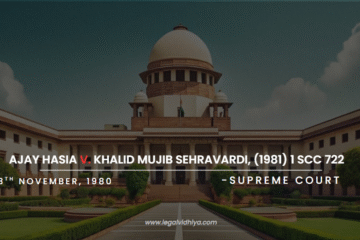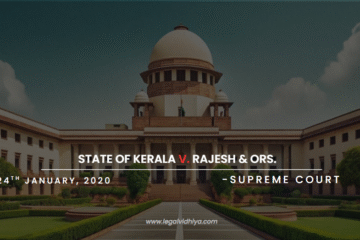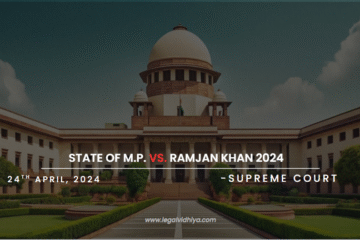
INTRODUCTION:
In our India constitution; Article 14 say Right to equality, the goal of it is “equality of states and of opportunities for every people in a country. Article 15 – 18 of Indian constitution, 1949 and Article 7 of Universal declaration of human rights 1948, it declares “all are equal before the law and are entitled for equal protection of law without discrimination. Equality not only in education and public places, it also includes in employment. Article 16 of India constitution say equality of opportunity in public employment, ensures equal opportunity for all citizens in employment or appointment to any office in country.
| Case Name | INDRA SAWHNEY VS UNION OF INDIA |
| Citation | AIR 1993 SC 477 |
| Date of Judgement | 16-11-1992 |
| Jurisdiction | SUPREME COURT OF INDIA |
| Case No | CIVIL WRIT PETITION |
| Case Type | CIVIL WRIT PETITION 930 of 1990 |
| Petitioner | INDRA SAWHNEY |
| Respondent | UNION OF INDIA & ORS |
| Bench | MR.JUSTICE M KANIA, MR.JUSTICE B.P. JEEVAN REDDY, MR.JUSTICE A.M AHMADI, MR.JUSTICE VENKATACHALLAH, MR.JUSTUCE S.R. PANDIAN, MR.JUSTICE K.SINGH, MR.JUSTICE P SAWANT, MR.JUSTICE. R SAHAI, MR. JUSTICE T.K THOMMEN. |
| Acts and section involved | THE INDIAN CONSTITION, 1949 Article 14, Article 340Article, 15(4)Article 16 (4) & (1) |
- FACTS OF THE CASE:
In this case, the petitioner Indra Sawhney filed writ petition against union of India and others regard reservation in India. The backward class formed 1st commission, Kaka kalel kar commission established in 1953, under 340 constitution of India. The purpose of the commission to investigate the condition of backward class. The report submitted by kaka kalel kar on 30th March 1955; is rejected as it is not satisfied by the commission approach to identify backward class under article 15.
Again 2nd commission appointed, Mandal commission in January 1st, 1979 by janata Dal under ruling pf prime minister Moraji Deasi ruling. In December 1980, the final report submitted by mandal commission to increase the reservation of government quota of 27% from 22.5% reservation of socially and educationally backward class people (schedule caste and scheduled tribes). The mandal commission report was under discussion for long time. Later Narasimha Rao was ruled Congress government in 1991.
He came up with some modifications and introduced new office memorandum which consists 27% reservation for SEBC in civil post and services under government of India and further added 10% reservation for economically challenged section, which are not covered in any reservation schems and issued criteria for economically challenged section seperately. By this action, many people started revolting against it and lot of people lost their life and property. At last supreme court of India came down to balance judicial pragmatism and political opportunism, by consists all petitions regarding the report of Mandal commission in 11 September 1990.
- ISSUES OF THE CASE
- Whether caste is a factor to determine backward class, and whether economic criteria may be used to classify people?
- Whether Article 16(4) is an exception to Article 16(1)?
- Whether executive have powers to issue order under Article 16(4)?
- CONTENTIONS OF THE PETITIONER:
- Indra Sawhney (advocate) with other legendary advocates Nani palkhivala; K.K venugopal; P.P Roa smt shymala papu stated that implementationof mandal commission report which making a right to equality in burial and damaging the public administration system.
- They stated that based on caste, can’t grant reservation; it doesn’t been a factor for deciding the reservation, if it can held it should be based economic & social and educational factors.
- If reservation were made it must be follow the latest census; we can’t find and identify actual quantum of backward class by old census. A new commission under article 340 (c) need to be formed to submit the report by latest census.
- By reservation, our country dividing into many, our society prevails into many classes and bringing hurt between two groups of people. And it violates constitution of article 14 equality before law.
- CONTENTIONS OF THE RESPONDENT:
- The respondent contended these steps taken to uplift the backward classes against exploitation and injustice and stated against petition, the identification of backward class were made by the 1961 census report.
- It was not a simple report, by submitting that report, Many test were made by the mandal commission to identify other backward class and to help them from discrimination.
- At last the report of Mandal commission was made under Article 340 of Indian constitution, 1959 with the assent of president of India.
ORDER OF THE COURT:
The Supreme Court held their verdict by
- In state of Madras v Smt champakan, government order issued by State of Madras for giving seats in medical and engineering college on basis of one’s caste was challenged. The supreme court held by amended article 15 by inserting clause (4) in Indian constitution, which aunthorized state to make special provision for social, educational backward class of citizen.
- In MR Balaji and Ors vs State of Mysore, the state issued order under Article 15(4) of constitution declaring all class except Brahmins as SEBC, Supreme Court held categorization of backward class into back and more back is not guaranteed by Article 15(4).
- In T. Devadasan vs Union of India, challenged scope of article 16(4), supreme court held government can’t excercise their power in case of appointing backward class people in employment by deny other class people, clause (4) of Article 16 is a provision or an exception to Clause(1).
- In state of Kerala v N.M Thomas, court held article 16(1) as right to equality under Article 14, permits reasonable classification made by government based on 2 criteria, backward class and must have nexus to represent.
- In Akhil Bharatiya Soshit Karamchari Singh (Railways) vs. Union of India, held the circulas issued by railway board towards scheduled tribe and scheduled caste promotions; it was held valid in railways
- K.C Vasanth Kumar v State of Karnataka, Supreme court held reservation must be based on two test (i) must comparable between scheduled caste and scheduled tribe in their backwardness, (ii) they must satisfy test lay down by State government.
- In 9 judge constitution bench of Supreme Court; by 6:3 majority passed judgment by using reference of above cases.
- The executive have powers to make rules and provisions under Article 16(4); orders made by them are enforceable.Article 16(4), is exhaustive of reserve Bank of backward class and it is a classification under article 16, not an exception to 16(1).
- The reservation can’t be given beyond 50%; reservation can be extended to promotions. Till any other criteria or factor are found for identification; we can use caste as a factor to uplift backward case, not by economic clauses.
Disputes regarding new criteria can be raised in Supreme Court only, Creamy layer should be omitted from backward class.
CONCLUSION:
By this landmark judgement, court tried best to give solution to many questions arised to the people regarding reservation by reasonable means and it brings and creates a balance between society and rights of backward classes. This reservation helped in uplifting of backward classes and eventhough many anti reservation voices were started raising their issues regarding it
REFERENCE:
Written by: Rubini Baskaran, an intern under Legal Vidhiya




0 Comments